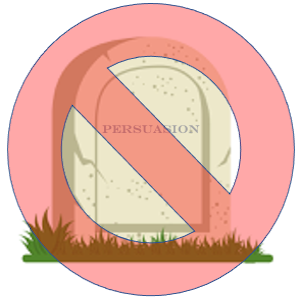By Dr. Ken Broda Bahm:

In the classic movie, Monty Python and the Holy Grail, there is a scene that is familiar to fans. It is medieval plague-ridden times, and a man pulls a cart through a village, calling, “Bring out yer dead!” When one body is brought to him, the body protests that he isn’t quite dead yet: “I’m feeling better!” We might think of that one as persuasion. There’s a common sentiment, an expectation even, that in today’s world of dug-in opinions, actual persuasion on non-trivial matters is next to impossible. If it isn’t dead yet, we are at least calling a code on it.
In a recent article in Bloomberg Law, Georgetown University Law Professor Erin Carroll asks that question: “Is Persuasion Dead?” Drawing from her experience with first-year law students currently being introduced to advocacy in what she calls “the persuasive semester,” she notes, “In 2021, the persuasive semester is feeling futile.” Through the pandemic and a turbulent political season, the realities of polarization, persuasive resistance, conspiracy beliefs, and the power of repeated claims over evidence, that sense of futility is understandable. The professor’s essay is worth a read, as she points to conscious listening and self-reflection as a way out. For my own part, I believe that for some audiences and on some topics, the more direct routes of persuasion may indeed be on life support, if not quite dead yet. But persuasive measures in their less direct forms — nudges and influence — are still breathing. In this post, I’ll reflect on a few of Professor Carroll’s specific observations, and argue for a more nuanced view of the way persuasion might operate in a resistant context.
The Direct Route to Persuasion May Indeed Be More Difficult
Professor Carroll writes about asking students to read Martin Luther King Jr’s “Letter from a Birmingham Jail,” and to note the powerful combination of ethos, pathos, and logos behind the leader’s appeal against systemic racism. But the professor then wonders, “could King’s words persuade the racists of today? Or, have too many people shut out any challenges to their beliefs?”
It may well be true that current society, with its greater ability to “curate” information into self-sealing and self-reinforcing “bubbles,” makes direct and reasoned appeals more likely to breed resistance than to convince. Any argument that starts with the express or implied notion of “here’s why you’re wrong…” will falter for most audiences. People like to believe that they’re rational and open-minded, but also like to stay consistent. When the foundational concepts of what is reasonable, what is comprehensible, and what makes sense are formed by one’s tribe and milieu, setting that aside may be next to impossible. Or worse, the refutation just invites counterargument, making the original attitude that much stronger.
The Nuanced Routes Are Still With Us (or Stronger)
Professor Carroll refers to the concept from social psychologist Arlie Hochschild of a “deep story,” or a narrative of who we are and what we believe. Independent of actual evidence, these stories will feel more “true” than anything else we are exposed to. And, as Carroll notes, “when facts conflict with these deep stories, we tend to jettison the facts.”
The implication for the persuader, however, is not to simply despair at the possibility of persuasion. It is instead to understand that, to be successful, persuasion needs to account for that deep story. That means knowing your audience and appreciating their attitudes and life experiences. Properly conducted, that is what voir dire should do. It also means searching creatively for ways to frame your message so you aren’t challenging those deep stories, but are instead at least partially jibing with your audience’s worldviews. Knowing and adapting to your audience has always been important. However, in an “alt-fact” age of greater tribalism and persuasive resistance, it is even more important.
Apply the Lesson to Yourself and not Just Your Audience
Professor Carroll makes one more important point that is not often appreciated: To be truly persuasive, it helps if you are persuasible yourself. In other words, if you are asking your audience to open their minds to you, ask if you’ve opened your own mind first. “It’s critical that attorneys listen,” she says, “put themselves in their opponents’ shoes, and realize they might be wrong.” Of course, that is likely to be part of your preparation process and not part of a powerful and confident opening or closing. That critical step of taking the other’s position, and understanding your own weaknesses, is a step that can be harder in a post-persuasion world. It is, however, a step that makes for far better adaptation and strategy.
“We need to be open to persuasion.” She continues, “The prosecutor needs to be amenable to the alibi. The plaintiff’s lawyer needs to be able to believe the defendant made a mistake. The judge needs to be willing to recognize that a legal precedent is unjust. We all—lawyers and non-lawyers alike—must be ready to concede that maybe, just maybe, we are wrong.” And, if we can do that, then maybe, just maybe, persuasion isn’t quite dead yet.
___
______
Other Posts on Persuasive Principles:
- Respect the Four Pillars of Persuasion
- See Persuasion as a Process (Toward a Unified Theory of Legal Persuasion)
- Aim Your Oral Argument at Your Judge’s Motivating Principle